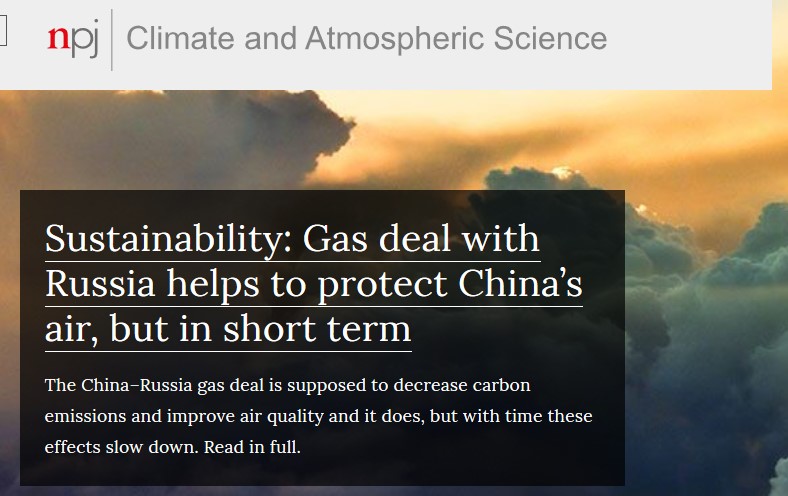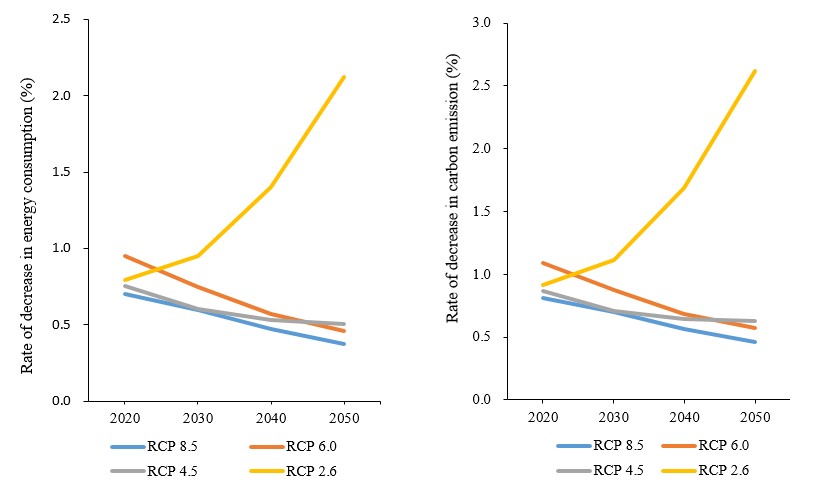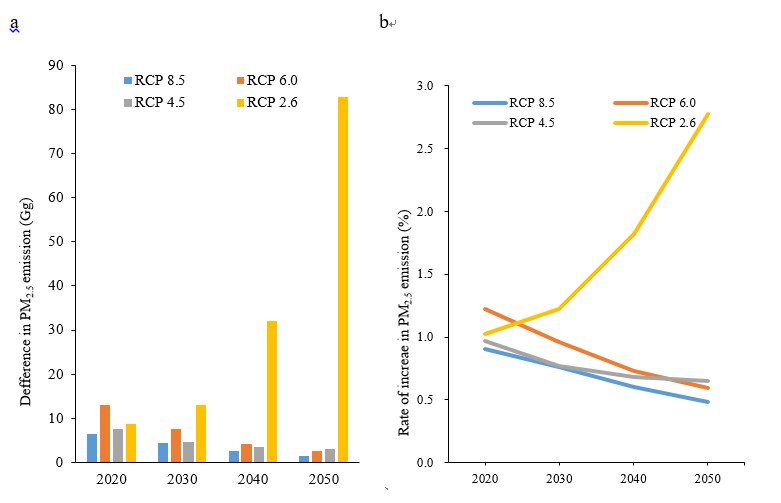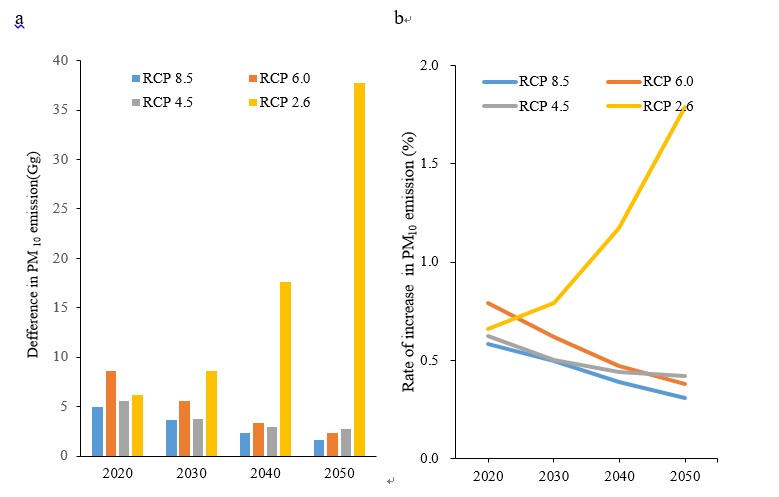14 May 2018, Ph.D. student Chenxi Lu as the first author, Associate Professor Sergey Venevsky as the Corresponding Author published an online Research papers entitled " The effects of the China–Russia gas deal on energy consumption, carbon emission, and particulate matter pollution in China " in "npj-Climate and Atmospheric Science".

After more than two decades of negotiation, the China–Russia gas deal represents a new era of energy cooperation between China and Russia. In total, this is a win–win deal for both sides. For China, the deal will decrease energy consumption and carbon emission but will not significantly influence air quality; for Russia, it will provide a new market for its gas resources. In this study, we calculated the energy consumption, carbon emission, and particulate matter pollution (PM2.5and PM10) in China in 2020, 2030, 2040, and 2050 under four IPCC representative concentration pathways (RCPs 8.5, 6.0, 4.5, and 2.6). In this research, we found that energy consumption and carbon emission decreased under the gas deal in RCPs 8.5, 6.0, and 4.5, although the rate of decrease slowed over time; however, in RCP 2.6, the rate of decrease of energy consumption and emission increased over time.PM2.5and PM10 emission showed similar trends but with increasing rate, although the gas deal would mitigate air pollution in the short term. Although China’s government hopes to reduce carbon and pollutant emission under the deal, our results suggest that additional mitigation measures will be necessary to achieve this goal. Nonetheless, the reduction in carbon emission suggests that the China–Russia gas deal provides a model that other countries can follow to slow climate change.

Figure 1. Rates of change of energy consumption in China (positive numbers represent an increase) under the four RCPs with the gas deal.

Figure 2. (a) Difference ofPM2.5between the situations with and without the gas deal (negative values represent a decrease compared to the scenario without a deal) and (b) change ofPM2.5in China under the four RCPs (positive values represent an increase compared to the scenario with no deal).

Figure 3. (a) Difference of PM10 between the situations with and without the gas deal (negative values represent a decrease compared to the scenario without a deal) and (b) change of PM10 in China under the four RCPs.
The spot of this paper is that it calculated the amount of consumption of carbon, petroleum, natural gas, and renewable energy through the amount of carbon emission and carbon emission coefficients. This method is applicable to other studies that do relevant scenario analysis.
NPJ- Climate and Atmospheric Science,a Nature partner journal, is dedicated to publishing the most important scientific advances in climate and atmospheric sciences. The journal encourages submissions focusing on topics including climate dynamics, climate variability, weather and climate prediction, climate change, weather extremes, atmospheric composition including aerosols, the hydrological cycle and atmosphere-ocean interactions.
Link:
https://www.nature.com/articles/s41612-018-0018-8?utm_source=Nature_website&utm_medium=Website_links&utm_content=HeaDun-Nature-npj_Climate_and_Atmospheric_Science-Atmospheric_Science/Climate-Global&utm_campaign=NPJ_USG_homepage_feature